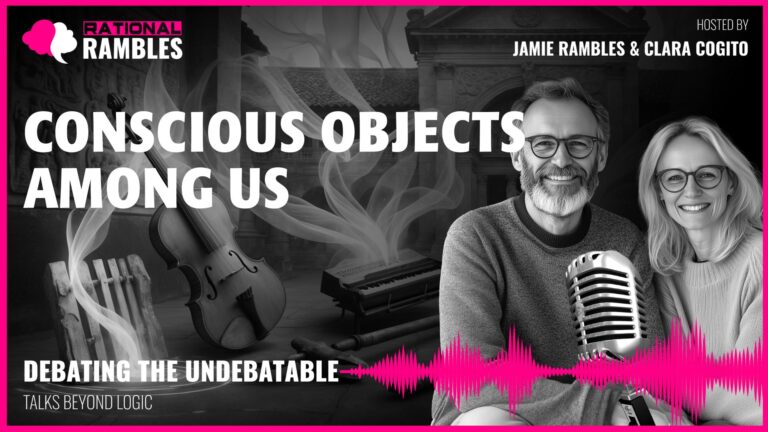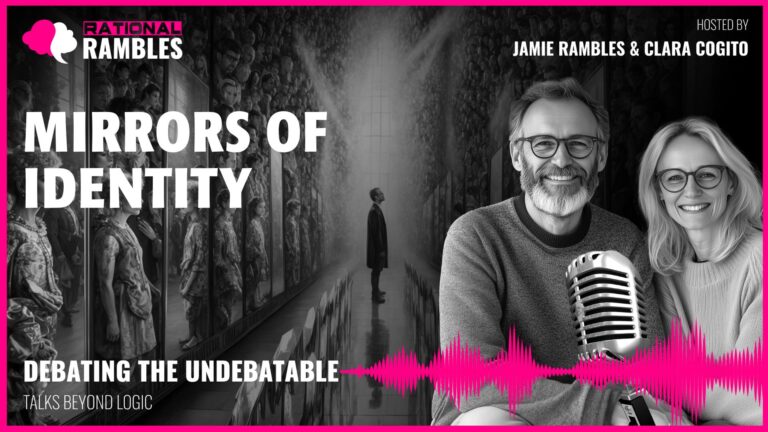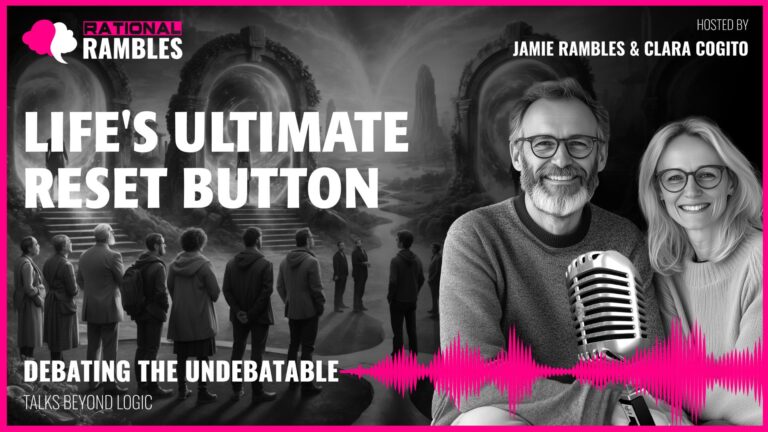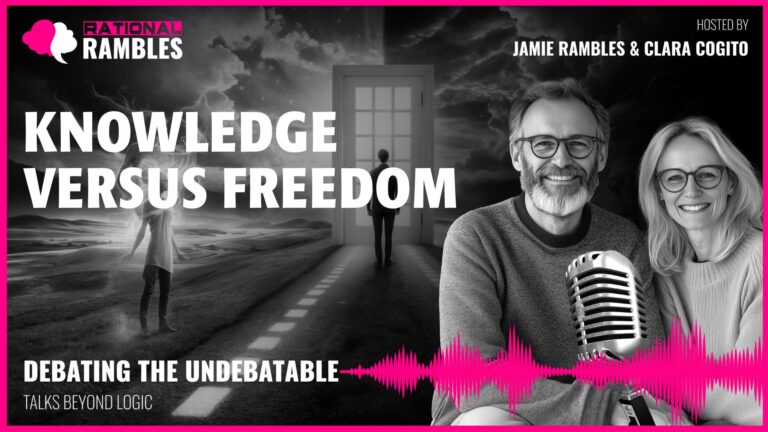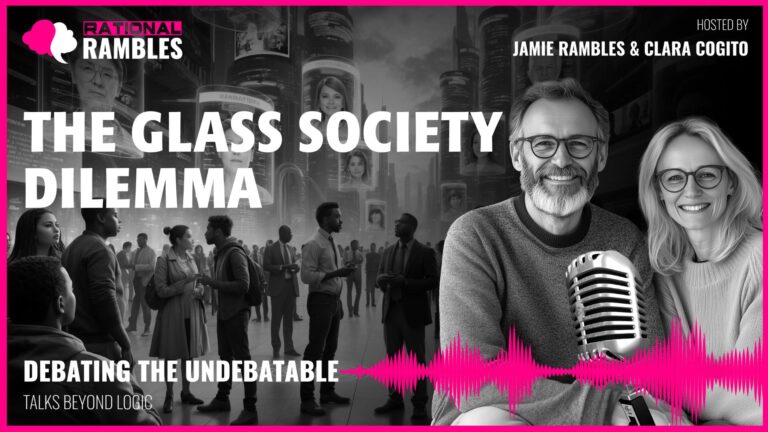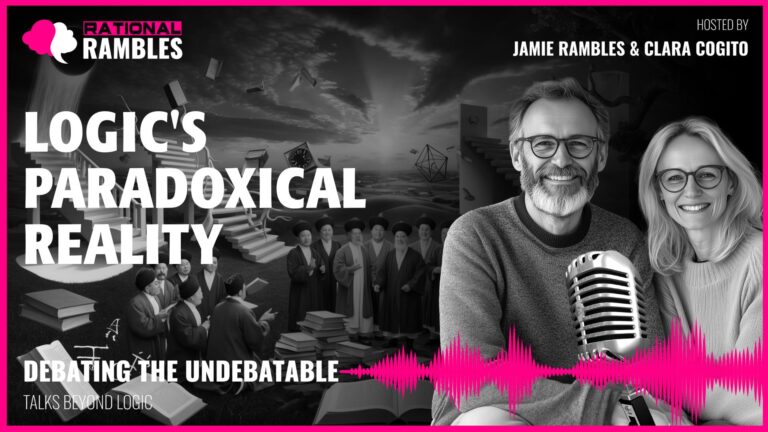Ecosystems Beyond Time: The Philosophy and Psychology of Ecological Time Capsules
Introduction
Imagine creating completely self-contained, autonomous ecosystems designed to survive for thousands of years—ecological time capsules that transcend individual human lifespans and perhaps even civilizations. This thought experiment sits at the fascinating intersection of ecology, philosophy, psychology, ethics, and design, challenging us to expand our thinking beyond the typical human timescales and consider our relationship with the natural world in profound new ways.
These millennial ecosystems force us to confront fundamental questions: What combination of species, climate conditions, and resources would create the most resilient and evolutionarily dynamic systems? Should we design these capsules for stability or adaptability? What is our ethical relationship to ecosystems we create but cannot fully control? Are we creators, stewards, observers, or participants? And perhaps most importantly, what do these long-term ecological projects reveal about human psychology, our relationship with mortality, and our capacity to care for entities beyond our immediate experience?
This article explores these questions and more, examining the philosophical and psychological dimensions of designing ecosystems for deep time. Beyond the practical ecological considerations, we investigate how such projects might transform our understanding of human responsibility, challenge our temporal perspectives, and potentially offer new frameworks for addressing contemporary environmental challenges. In contemplating ecological time capsules, we discover not just potential blueprints for long-term biodiversity preservation, but mirrors reflecting our deepest values, fears, and hopes regarding our place in the great continuity of life.
The Philosophical Foundations
The concept of ecological time capsules intersects with numerous philosophical traditions and raises profound questions about humanity’s relationship with nature, time, and responsibility. These thought experiments push us to consider not just what is technically possible, but what is ethically desirable and philosophically coherent.
Anthropic Bias and Environmental Ethics
Any attempt to design self-sustaining ecosystems immediately confronts what philosophers call the “anthropic bias”—our tendency to perceive and interpret the world through a specifically human lens. Research in environmental psychology confirms this bias, showing that humans tend to prefer certain environments—like savannas with scattered trees and water features—possibly reflecting our evolutionary history. This raises an important question: Would our ecological time capsules reflect objective principles of ecosystem resilience, or would they unconsciously replicate human aesthetic preferences and values?
This connects directly to foundational debates in environmental ethics. Philosophers like Aldo Leopold argued for a “land ethic” that extends moral consideration to the biotic community as a whole. Under this framework, we would be obligated to consider the wellbeing of the entire system rather than selecting purely for human interest or aesthetic pleasure. But this immediately raises another question: How do we define and measure “wellbeing” in an ecosystem? Is it biodiversity, stability, resilience, evolutionary potential, or some combination?
Determinism vs. Contingency
Another philosophical tension relevant to ecological time capsules is that between determinism and contingency. If we design these ecosystems too rigidly, we might eliminate the very emergent properties and evolutionary innovations that make natural systems remarkable. The Taoist concept of “wu-wei”—often translated as “action through non-action” or “effortless action”—offers a useful framework here. Perhaps the most successful ecological time capsules would be those where humans establish initial conditions but then allow the system to find its own balance, rather than micromanaging every interaction.
This connects to philosophical debates about control versus autonomy that have existed since ancient times. While Plato might have favored the designed, orderly ecosystem with clear hierarchies and purposes, Heraclitus would likely advocate for systems embracing flux and transformation as essential properties of reality itself.
Telos and Purpose
The telos—or purpose—of these time capsules would fundamentally shape their design and ethical implications. Aristotle argued that understanding anything requires grasping its purpose or function. What, then, would be the purpose of ecological time capsules? Are they:
- Scientific experiments to understand evolutionary processes?
- Repositories of biodiversity in case of planetary catastrophe?
- Educational tools to foster ecological awareness?
- What philosopher Hans Jonas might call “monuments of responsibility”—physical embodiments of our commitment to preserving life’s diversity?
Each purpose carries different ethical implications and design requirements. A biodiversity repository might prioritize maximum genetic diversity and adaptability, while an evolutionary experiment might focus on species with high evolvability and the potential for novel interactions.
Temporality and Being
Creating ecosystems designed to outlast individual human lifespans—perhaps even civilizations—challenges our typical relationship with time. Philosopher Martin Heidegger’s concept of “thrownness” (Geworfenheit) becomes relevant here: we find ourselves “thrown” into existence without choosing it, but must take responsibility for creating meaning within our finite lives.
These ecological projects might represent one way of creating meaning on a scale that transcends individual human lifespans—a conversation with the deep future, with beings and worlds we can never directly experience. This connects to what philosopher Timothy Morton calls “hyperobjects”—phenomena so massively distributed in time and space that they exceed our usual ways of understanding. A millennial ecological time capsule would be such a hyperobject, extending far beyond immediate perception and requiring thinking across timescales humans typically find difficult to grasp.
Psychological Dimensions of Deep Time Projects
Beyond philosophical considerations, ecological time capsules intersect with profound psychological questions about human mortality, meaning, and our ability to care about entities distant from us in time and kind.
Terror Management and Symbolic Immortality
Research on terror management theory suggests that creating lasting legacies is one way humans cope with mortality awareness. Could millennial ecosystems function, in part, as elaborate responses to our knowledge of our own finite existence? These projects might offer a form of symbolic immortality—creating something that outlasts us as individuals and even as a civilization.
Studies in existential psychology indicate that engaging with time scales beyond our individual lives can foster what some researchers call “existential wellbeing”—healthier relationships with our finite existence. Projects connecting us to both deep time and the broader web of life might help address the existential anxiety that often accompanies modern life, allowing these time capsules to become places of psychological meaning as well as ecological value.
Psychological Distance and the Expanding Circle
Research on “psychological distance” demonstrates how humans tend to care less about impacts that feel distant in time, space, or social connection. We struggle to form emotional attachments to entities separated from us by millennia or significant differences in form and function.
Ecological time capsules could serve as bridges across this psychological distance, making the welfare of future generations and other species more emotionally salient. This connects to philosopher Peter Singer’s concept of the “expanding circle” of moral concern—the historical pattern of human moral consideration expanding from immediate family to tribe to nation to all of humanity. These projects might represent a further expansion of that circle to include both other species and future generations not yet born.
Awe, Humility, and Environmental Identity
Research in environmental psychology shows that experiences of awe in nature often induce a healthy sense of smallness and connection to something larger than ourselves. Ecological time capsules could be designed to foster this sense of awe and humility, not just for scientists directly involved but for anyone who engages with them.
Long-term engagement with these systems might also foster what psychologists call “ecological identity”—a sense of self that includes the natural world. Studies show that strong ecological identity correlates with pro-environmental behavior and psychological wellbeing, suggesting these projects could have cascading positive effects on both human psychology and environmental action.
Practical Design Considerations
Moving from philosophy and psychology to practical implementation, we must consider the ecological principles and design decisions that would shape these time capsules.
Scale and Boundaries
Research on island biogeography suggests that smaller ecosystems experience faster extinction rates and reduced speciation. This indicates that ecological time capsules would need to be quite substantial—perhaps the size of a small island at minimum—to maintain evolutionary potential for millennia. This raises practical questions about feasibility but also philosophical questions about what constitutes a “contained” ecosystem.
Perhaps these time capsules should not be conceived as completely isolated systems but as regions with semi-permeable boundaries allowing regulated interaction with the external environment. This aligns with how healthy boundaries function psychologically—not as complete separation but as regulated exchange that maintains internal integrity while allowing beneficial connections.
Species Selection and Diversity
Which species should populate these millennial ecosystems? Ecological research suggests prioritizing:
- Ecosystem engineers: Organisms like beavers that physically reshape environments, mycorrhizal fungi that facilitate nutrient exchange, or keystone predators that regulate populations
- Species with high adaptive potential: Those with genetic diversity and relatively quick reproductive cycles that could evolve in response to changing conditions
- Functional redundancy: Multiple species that can fulfill similar ecological roles as insurance against extinction
- Extremophiles: Organisms adapted to extreme conditions as a form of ecological insurance policy
Beyond ecological function, we might also consider species that foster human psychological engagement—those with complex social behaviors, interesting life cycles, or symbiotic relationships that tell stories about interconnection. Research shows that emotional connection to specific organisms often serves as an entry point for broader ecological concern.
Climate Conditions and Environmental Variables
Should these ecosystems aim for stability or incorporate variability? Ecological research suggests that some disturbance regimes are actually essential for ecosystem health and evolution. This points toward what might be called “patterned variability”—predictable cycles of change punctuated by occasional larger disturbances.
This approach mimics natural systems with seasonal changes and periodic fires or floods, allowing for both adaptation to regular patterns and the evolutionary innovation that comes from responding to less frequent challenges. It strikes a balance between order and creative disorder that fosters both stability and adaptive potential.
Resource Cycling and Energy Inputs
No system is truly isolated—even Earth’s biosphere depends on solar energy from outside. What ecological time capsules require is not complete isolation but a high degree of internal recycling and circularity for materials, coupled with sustainable energy inputs.
This connects to the concept of autopoiesis developed by biologists Humberto Maturana and Francisco Varela—the idea of systems that continuously regenerate the components and processes that constitute them. Research on closed ecological systems suggests that water cycling would be particularly critical, as maintaining clean water cycles has proven challenging in previous experiments like Biosphere 2.
The Ethics of Intervention
Perhaps the most challenging philosophical question surrounding ecological time capsules concerns the appropriate human relationship to these systems once established. Do we have the right or responsibility to direct or merely observe evolution in these microworlds?
From Rights to Responsibilities
Rather than framing this question in terms of rights, it may be more productive to consider it in terms of responsibilities. If we create these systems, we incur certain obligations toward them—what environmental philosopher J. Baird Callicott calls “obligations that attend relationships.”
These responsibilities might include allowing for genuine evolutionary autonomy while preventing catastrophic collapse, similar to how a parent has responsibilities to both protect a child and allow them to develop independence. This suggests an ethical approach of “bounded non-interference”—establishing initial conditions and boundaries but allowing substantial freedom within those parameters.
Graduated Intervention
The principle of “graduated intervention” offers a potential framework: more active management in early stages that gradually decreases as the system demonstrates stability, with later interventions limited to preventing complete collapse or addressing unforeseen catastrophic developments.
This evolutionary approach to the ethical relationship itself acknowledges that what constitutes appropriate care changes over time. Philosopher Hans Jonas’s “imperative of responsibility,” which he formulated specifically for our technological age, might be adapted for ecological time capsules: “Act so that your interventions foster rather than diminish the long-term flourishing and evolutionary potential of the system.”
Humility and Pluralism
Given the inherent unpredictability of complex systems over millennial timescales, any approach to these time capsules should be characterized by what we might call “epistemic humility”—recognition of the limits of our knowledge and foresight.
This humility suggests embracing a pluralistic approach with multiple types of ecological time capsules—some more interventionist, others more hands-off; some focusing on biodiversity preservation, others on evolutionary potential; some including human communities, others excluding them. This diversity of approaches creates a kind of portfolio diversification against our inevitable blindspots and biases.
Philosopher Isaiah Berlin’s concept of value pluralism—the idea that there are multiple genuine values that cannot be reduced to a single metric or ranking—provides philosophical grounding for this approach. By creating diverse types of ecological time capsules, we acknowledge that biodiversity preservation, evolutionary potential, scientific discovery, and human-nature integration are all valuable aims that might sometimes trade off against each other.
Human-Nature Relationships in Deep Time
A core philosophical tension in any discussion of ecological time capsules concerns the proper relationship between humans and these systems. Are humans part of nature or separate from it? Should these capsules be human-free zones representing some notion of “pure” nature, or should they acknowledge humans as ecological participants?
From Separation to Integration
The dichotomy between humans as separate from or part of nature is deeply embedded in cultural psychology. Studies show that people with more industrialized backgrounds tend to perceive a sharper human-nature divide than those from cultures with closer connections to subsistence living.
Ecological time capsules offer an opportunity to explore different models of human-nature relationship. The American tradition of wilderness preservation often positioned humans as outside observers of pristine nature, while many Indigenous philosophies see humans as integral participants in ecological systems. Rather than privileging one approach, multiple models could be implemented as part of a diverse portfolio of time capsules.
Evolving Relationships
Whatever initial relationship is established, it would inevitably evolve over generations. Even if starting with a human-free design, future generations might develop different relationships with these systems—from distant observation to active stewardship or even integration.
This evolution of relationship connects to philosopher Martin Buber’s distinction between “I-It” and “I-Thou” relationships. We might begin with an “I-It” relationship, viewing the ecosystem instrumentally as an experiment or repository. But over time, this could transform into an “I-Thou” relationship characterized by mutual respect and recognition.
Cultural Infrastructure and Intergenerational Transmission
The social and cultural infrastructure surrounding these time capsules might be as important as their ecological design. Research on cultural transmission suggests that embedding values in stories, rituals, and institutions helps preserve them long-term.
These ecological projects might require dedicated communities of stewards who pass down their responsibility through both practical knowledge and meaningful narratives. This transforms the thought experiment from a purely ecological one to a socio-ecological one that encompasses human communities and their relationship to these long-term projects.
Philosopher Alasdair MacIntyre’s concept of “practices”—coherent, complex forms of socially established cooperative human activity through which goods internal to that activity are realized—offers a useful framework. The maintenance and study of these ecosystems could constitute such a practice, with its own internal goods, virtues, and standards of excellence that would evolve over generations.
Psychological and Cultural Impacts
Beyond their ecological function, millennial time capsules could have profound impacts on human psychology and culture, potentially transforming how we think about time, nature, and responsibility.
Transforming Temporal Perspectives
Psychological research indicates that humans struggle to think meaningfully about timeframes beyond a few decades. Our cognitive architecture evolved to deal with immediate threats and opportunities, not multigenerational planning.
Ecological time capsules could serve as concrete manifestations of deep time, helping to expand our temporal horizons beyond the typical human focus on immediate or near-term consequences. Research on intergenerational psychology shows that when people feel connected to future generations, they make more sustainable choices. Designing these time capsules could strengthen psychological connection to the deep future and foster more long-term thinking in other areas.
Social Imaginaries and Cultural Narratives
Philosopher Charles Taylor’s concept of “social imaginaries”—the ways ordinary people imagine their social surroundings, often expressed in images, stories, and legends rather than theoretical terms—helps explain how these projects might impact culture broadly.
These ecological time capsules could transform social imaginaries around time, nature, and human responsibility in powerful ways. They become not just scientific experiments but symbolic acts that help us reimagine our place in the world and our obligations to the future.
Psychological research on behavior change shows that abstract concepts alone rarely drive significant shifts in how we act—we need concrete experiences, emotional engagement, and cultural support. These ecological time capsules could provide all three, serving as what some psychologists call “environmental exemplars”—concrete manifestations of sustainable human-nature relationships that inspire broader cultural change.
Fostering “Response-ability”
Philosopher Donna Haraway’s concept of “response-ability”—the capacity to respond thoughtfully to the challenges of living ethically in a more-than-human world—captures the potential transformative impact of engaging with ecological time capsules.
Whether or not we ever create actual millennial ecological time capsules, the process of thinking seriously about how we would design them and why helps develop this response-ability. It encourages what we might call “species humility”—recognition that despite our technological capabilities, we cannot fully predict or control the intricate, emergent processes of living systems.
This humility does not mean abandoning the project of ecological design but approaching it with an awareness of both our creative power and its limits, our responsibility and our need for restraint. Research in environmental psychology suggests that this balance between agency and humility correlates with both psychological wellbeing and sustainable behavior.
Practical Implementation Challenges
Moving from thought experiment to reality would entail numerous practical challenges that have both technical and philosophical dimensions.
Monitoring and Knowledge Transmission
How would we monitor or study these systems over such extended periods? Traditional scientific monitoring typically operates on timescales of years or decades, not millennia. We would need to design monitoring systems that could function across extreme timespans and potentially survive civilizational disruptions.
This connects to challenging questions about knowledge preservation and transmission. What kinds of information would we want to preserve about these systems, and how would we ensure that knowledge remains accessible and meaningful to future generations? These questions mirror broader challenges in fields like nuclear waste management, where warning systems must remain comprehensible for thousands of years.
Institutional Longevity
Most human institutions struggle to maintain continuity over even a few centuries. Creating governance structures capable of maintaining consistent oversight of ecological time capsules for millennia would require radical innovation in institutional design.
Research on long-lived institutions like certain religious organizations or the Japanese temple rebuilding tradition at Ise, which has continued for over 1,300 years, might offer insights. These examples suggest that institutional longevity often depends on embedding practices within broader cultural and spiritual frameworks that provide motivation beyond immediate instrumental goals.
Ecological and Cultural Adaptation
The environments surrounding these time capsules would inevitably change over millennia due to both natural processes and human activities. Climate change, geological processes, and technological development would all potentially impact these systems even if they were designed to be relatively self-contained.
Similarly, the human cultures interacting with these systems would transform over time, potentially radically changing how people understand and relate to the time capsules. Any successful implementation would need to build in mechanisms for both ecological and cultural adaptation while maintaining core functions and values.
Conclusion: Containers of Evolving Wisdom
Ecological time capsules designed to persist for millennia represent far more than scientific experiments or conservation efforts. They function as physical manifestations of our most profound questions about humanity’s relationship with nature, time, and responsibility. Whether or not such systems are ever fully implemented, the thought experiment itself offers valuable insights.
These millennial ecosystems challenge us to expand our temporal horizons, confront our mortality, and consider our ethical obligations to entities distant from us in time and kind. They invite us to develop what we might call “species humility”—recognition of both our creative power and its limits—while simultaneously offering opportunities for meaningful action in the face of contemporary environmental challenges.
Perhaps most importantly, ecological time capsules could serve as containers not just for biodiversity but for evolving wisdom about how to live well on a finite planet in respectful relationship with other forms of life. They become concrete embodiments of an ethic that extends moral consideration across both species boundaries and deep time—physical manifestations of what philosopher Hans Jonas called “the imperative of responsibility.”
In a world increasingly characterized by short-term thinking and environmental disruption, the project of imagining and potentially creating ecological time capsules offers a powerful counternarrative—one that reconnects human purpose with the great continuity of life and positions us not just as consumers or even stewards of nature, but as thoughtful participants in its ongoing unfolding.
References
Callicott, J. B. (1989). In defense of the land ethic: Essays in environmental philosophy. SUNY Press.
Haraway, D. J. (2016). Staying with the trouble: Making kin in the Chthulucene. Duke University Press.
Jonas, H. (1984). The imperative of responsibility: In search of an ethics for the technological age. University of Chicago Press.
Leopold, A. (1949). A Sand County almanac and sketches here and there. Oxford University Press.
MacIntyre, A. (2007). After virtue: A study in moral theory (3rd ed.). University of Notre Dame Press.
Maturana, H. R., & Varela, F. J. (1980). Autopoiesis and cognition: The realization of the living. D. Reidel Publishing Company.
Morton, T. (2013). Hyperobjects: Philosophy and ecology after the end of the world. University of Minnesota Press.
Singer, P. (2011). The expanding circle: Ethics, evolution, and moral progress. Princeton University Press.
Taylor, C. (2004). Modern social imaginaries. Duke University Press.
Trope, Y., & Liberman, N. (2010). Construal-level theory of psychological distance. Psychological Review, 117(2), 440-463.




